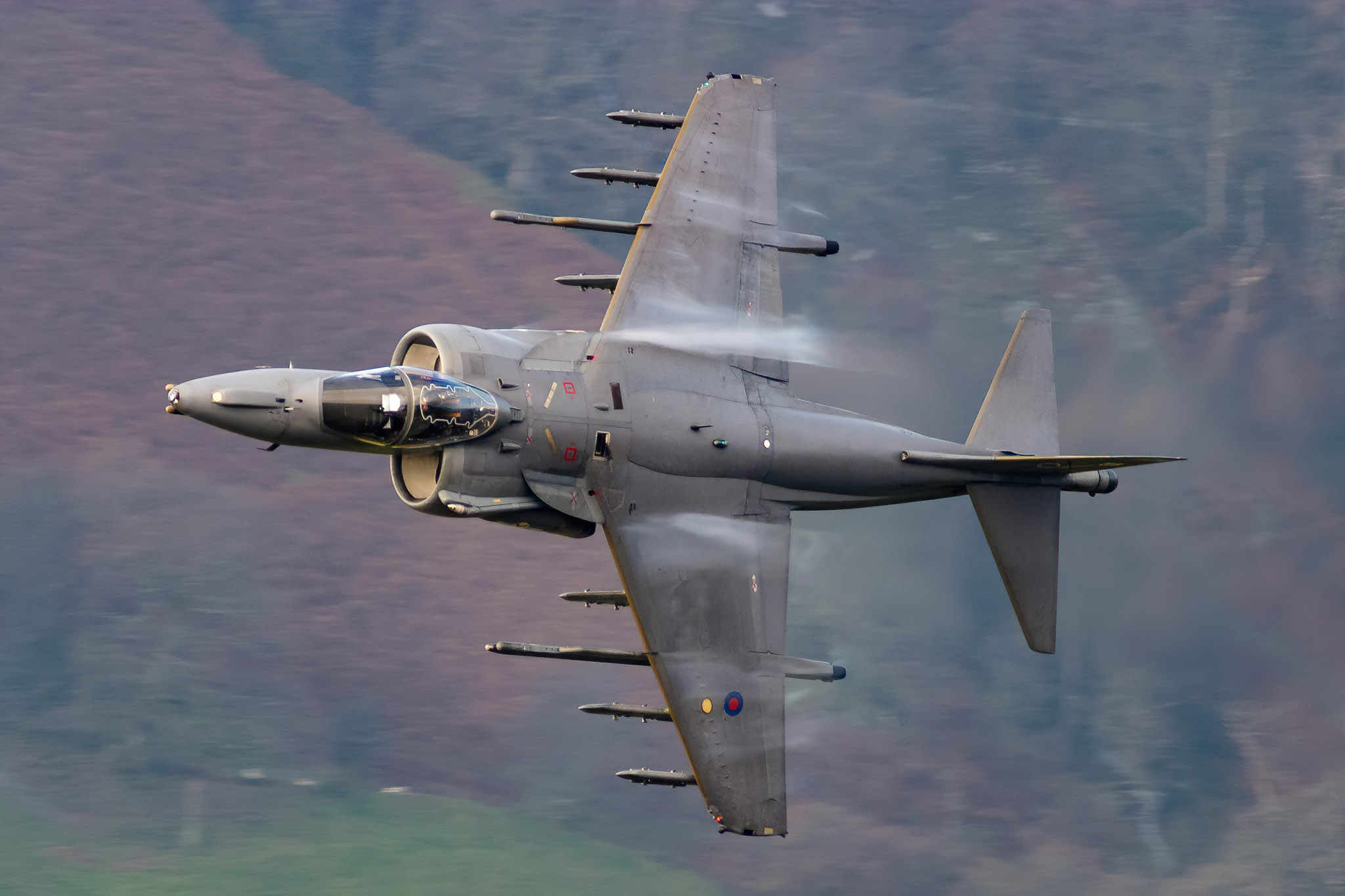Low-level Photography
Outdoor Photography feature - 'Low-Flying Jets'
Published April 2005
|
| Having long had a passion for aviation photography Philip Stevens has now taken it a step further, capturing fast moving military jets flying low across the landscape. |
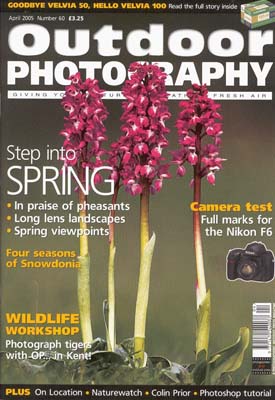 |
|
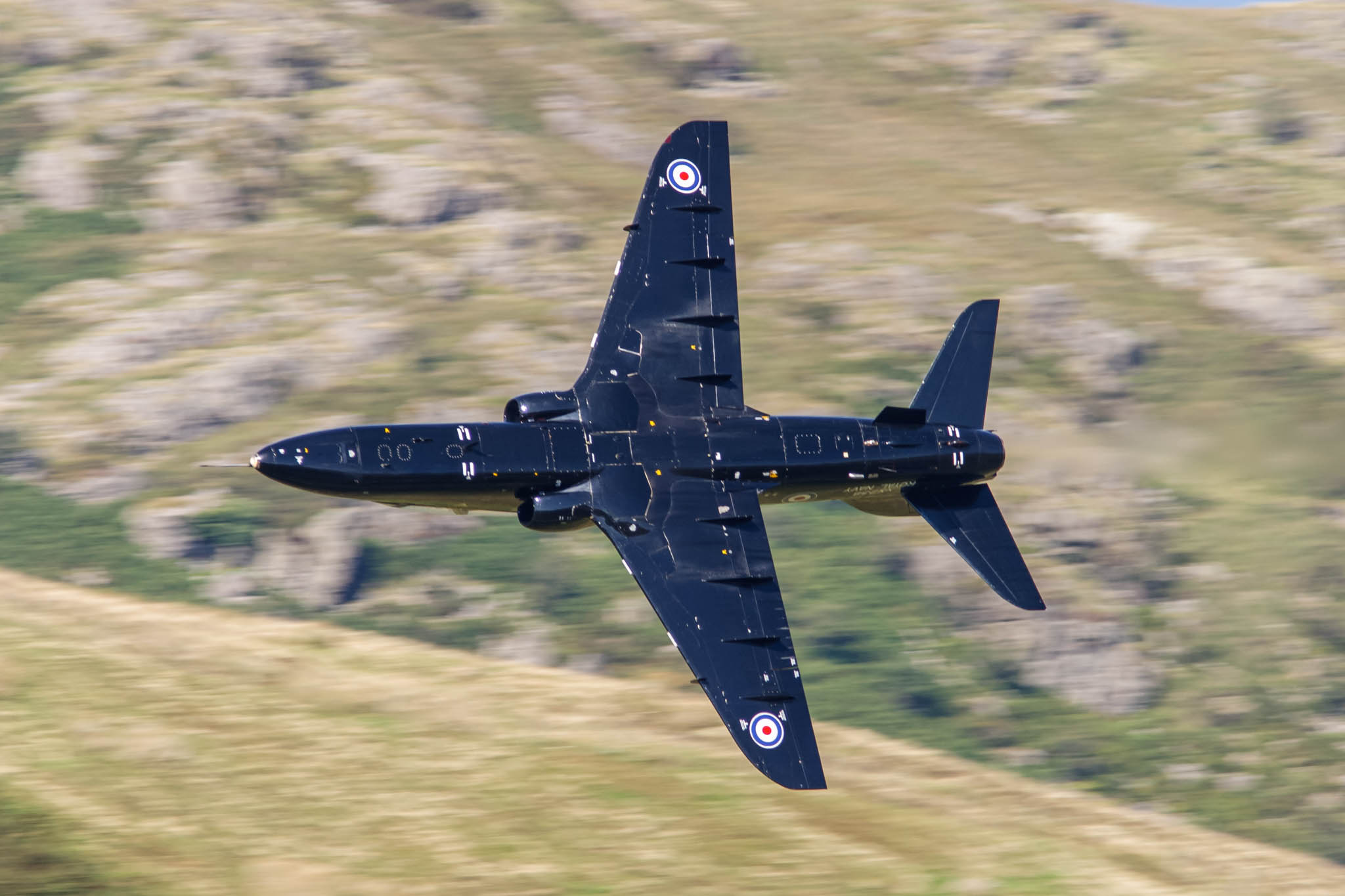 Hawk T.1 from RNAS Culdrose almost inverted, with the sun full on the undersides, as it makes a tight turn to get through the narrow gorge.
Hawk T.1 from RNAS Culdrose almost inverted, with the sun full on the undersides, as it makes a tight turn to get through the narrow gorge.
300mm lens, 1/800 sec at f/4 ISO 200. |
Harrier GR.7 of 20(R) squadron from RAF Wittering, flying low through the valleys of mid-Wales.
It was a dull December day and this was the only movement between 9am to 4pm.
300mm lens + 1.4 extender, 1/800 sec at f/4, ISO 400.
Additional processing with 'Neat Image' software to reduce grain. |
It's six o'clock in the morning, I have checked the weather forecast websites, all looks ideal for a day in the hills. With
my backpack filled with extra warm and waterproof clothes, food and my Canon camera equipment, I set off on the 220 mile round trip, which I have become very familiar.
Today I am off to Mid-Wales in search of military aircraft flying along one of the Ministry of Defences low-level flying routes, or as they describe it, low-flying Area 7 (LFA7). An aviation photographer for 30 years, I have for the last 12 months been concentrating on 'low-level' photography. This is where you aim to capture images of very fast moving military fighters (Harriers, Jaguars and Tornados) and trainers (Hawks and Tucanos), where you get above the subject and only the ground can be seen in the background. |
|
This is no easy task. Finding the
places where there are good opportunities, requires some considerable research. I have walked the hills for many years and have gained a good knowledge of where the military
fly. Other enthusiasts I have met in the hills, have offered me considerable help. Steep sided valleys (choke points), which funnel the aircraft close to where you are standing,
are essential. The sun's position and particularly the angle the aircraft is at, dictate the quality of the image. My favourite angle is a top shot where the aircraft is
making a tight turn towards you. Some locations offer side shots and bottom shots. In the right weather conditions, vortices above the wings, add more to the image by giving a
greater feeling of speed. Patience is very important, on some days nothing comes by.
However, superb views of the countryside, |
|
which goes hand-in-hand with 'low
level' photography, is some considerable compensation on the quiet days. At an air show I am used to taking 500 or more, good digital images in a day. The nature of low level photography means it is more demanding and 25 reasonable images with one great image is all that is hoped for in a day.
Digital Advantages
I moved to Canon camera equipment, many years ago, when I first saw a friend's Canon AE-1 camera. I bought an AE-1P and later also an A-1. They were replaced with the Canon T90 and then Canon EOS 10. In June 2003 I went digital by splashing out on the Canon EOS 10D. Going digital has changed my life (photographically). I had to give up black and white processing at home when my children were born. Digital images and Photoshop has enabled me to regain my processing skills, giving me full control over my images.
|
My favoured lens for low-level photography is my DSLR x1.6 sensor + Canon EF 300mm f4 L USM lens, often combined with a Canon x 1.4 extender. A real bonus is the x 1.6 aspect ratio of the Canon 10D, which gives me the extra power needed to capture full-frame images of the aircraft. Good quality glass combined with rapid autofocus is essential. With very few opportunities in a day, you want to make sure you capture the subject pin sharp.
Technique is important, first of all you need to be very alert, waiting for hours sometimes puts you off your guard, you only get a few seconds notice before they have passed you. You don't hear them coming by-the-way. Once or twice I have only seen the shadow on the hill side at first, struggling to see the camouflaged jet along side it. I usually set the camera to Aperature Priority (Av) to ensure maximum shutter speed, using the really useful digital ISO setting to ensure a shutter speed of around 1/750 or more if possible. With the constantly changing weather conditions, it is not unusual to change the ISO setting from 100 to 400 or more in a day, now you can't do that with film. The Auto focus mode of AI servo works well for me. Of course a good panning technique is essential. |
|
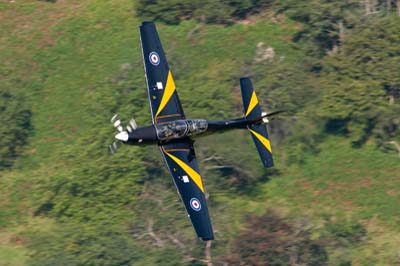 |
Tucano T.1 from RAF Linton on Ouse - very colourful with a great backdrop, several hundred feet below my position.
300mm lens + 1.4 extender 1/500 sec at f/6.3 ISO 200 |
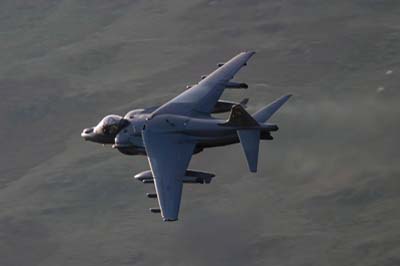 |
|
The military have to fly low-level as part of their ongoing training. The demands of two Gulf wars, with the requirement to fly low level to avoid enemy radar, ground to air missiles and AAA batteries, has proved this. The MOD is very careful to avoid communities and only fly during the week days. Of the farmers I have met, most have a respect for the pilots and stop work to watch the jets go by.
If you decide to go to the hills of Wales, the Lake District (LFA17) or even Scotland (LFA14, LFA16), then make sure you stick to the footpaths, close gates and take your litter home and so respect the countryside.
|
Harrier GR.7 from RAF Cottesmore turns towards the sun to offer more interesting light and a challenge to the light metering.
300mm lens + 1.4 extender 1/800 sec at f/5.6, ISO 200. |

 Hawk T.1 from RNAS Culdrose almost inverted, with the sun full on the undersides, as it makes a tight turn to get through the narrow gorge.
Hawk T.1 from RNAS Culdrose almost inverted, with the sun full on the undersides, as it makes a tight turn to get through the narrow gorge. 